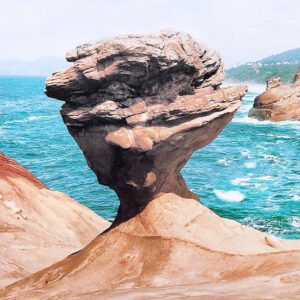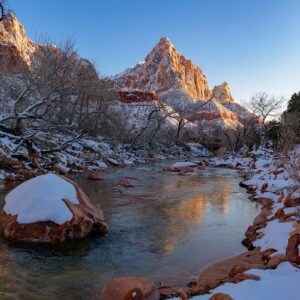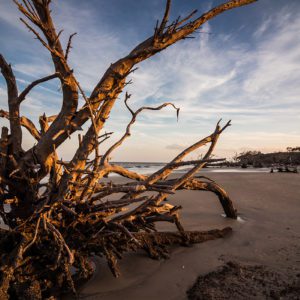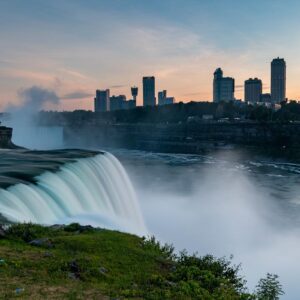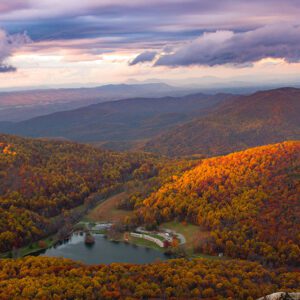Little River Canyon
Tucked away in the northeastern corner of Alabama lies one of the most breathtaking natural wonders in the Southeastern United States — Little River Canyon National Preserve. Known for its dramatic cliffs, rushing waterfalls, and the rare distinction of hosting a river that flows almost entirely on top of a mountain, this preserve offers a unique combination of rugged beauty and rich biodiversity. Often referred to as the “Grand Canyon of the East,” Little River Canyon is a haven for adventurers, nature enthusiasts, and anyone seeking solace in the untamed wilderness.
The Unique Geography of Little River Canyon
Little River Canyon is perched atop Lookout Mountain, a geological marvel that extends from Alabama through Georgia and into Tennessee. What sets the canyon apart from other natural formations is the Little River itself — a river that astonishingly flows along the mountain’s ridge for nearly its entire length.
The Little River has three main forks — the East, Middle, and West Forks — that converge near the town of Mentone before plunging into the canyon. Over millions of years, the river carved out the 12-mile-long gorge, with cliffs that tower up to 600 feet in some places. The continuous process of erosion has shaped the dramatic landscape, forming rapids, pools, and waterfalls that draw visitors year-round.
The Stunning Waterfalls
One of the most iconic features of Little River Canyon is its series of waterfalls, each with its own personality and charm. These cascades add a musical backdrop to the rugged scenery and offer spectacular photo opportunities.
1. Little River Falls
The crown jewel of the preserve, Little River Falls marks the beginning of the canyon and is easily accessible from the main entrance. The falls plunge about 45 feet into a deep pool below, roaring with intensity during the spring rains and softening into a graceful flow in the drier months. The observation deck provides a perfect vantage point for photographers and sightseers alike.
2. Grace’s High Falls
Alabama’s tallest waterfall, Grace’s High Falls, tumbles an astonishing 133 feet down the canyon walls. It is a seasonal waterfall, most prominent during wet seasons when rain swells the flow. Visitors often hike to an overlook to witness this breathtaking cascade, surrounded by the lush, rugged landscape.
3. DeSoto Falls
Though technically outside the boundaries of Little River Canyon National Preserve, DeSoto Falls is fed by the West Fork of the Little River and is a must-see for anyone visiting the area. With a drop of over 100 feet, it’s one of the most impressive waterfalls in the Southeast, complete with a tranquil lake above the falls for kayaking and fishing.
Recreational Activities
Little River Canyon isn’t just about sightseeing — it’s a paradise for outdoor enthusiasts. Whether you’re into heart-pounding adventures or peaceful nature walks, the preserve offers something for everyone.
1. Hiking
Hiking is one of the most rewarding ways to explore Little River Canyon, with trails that cater to all skill levels. Here are some of the most popular routes:
- Little River Canyon Rim Parkway Overlooks: This 11-mile scenic drive offers multiple short trails that lead to breathtaking overlooks, including Mushroom Rock, Hawk’s Glide, and Wolf Creek Overlook. These quick hikes are perfect for those wanting to experience stunning vistas without an all-day commitment.
- Eberhart Point Trail: For a more challenging hike, the Eberhart Point Trail descends steeply into the canyon, offering close-up views of the river and the rugged rock formations. The trek back up is demanding, but the serene surroundings and the chance to dip your feet in the cool waters of the Little River make it worthwhile.
- Johnnie’s Creek Trail: A moderate trail that meanders along Johnnie’s Creek, this path is ideal for those looking to enjoy the quieter side of the canyon. The trail features beautiful wildflowers in the spring and plenty of shaded areas for a leisurely hike.
- Bear Creek Trail: This more remote and less-traveled trail is perfect for seasoned hikers looking for solitude and a true backcountry experience. The route winds through dense forests, along rocky ridges, and down to Bear Creek, a tributary of the Little River.
2. Rock Climbing and Bouldering
With its steep sandstone cliffs and rugged terrain, Little River Canyon has become a popular destination for rock climbers. Climbers from across the country visit to test their skills on the vertical walls, which offer routes for both beginners and experts.
3. Kayaking and Whitewater Rafting
The Little River is a whitewater enthusiast’s dream, with Class III to Class V rapids in certain sections. During the spring rainy season, experienced kayakers navigate the roaring waters, while calmer areas upstream offer peaceful paddling experiences for less seasoned adventurers.
4. Swimming and Fishing
The canyon’s deep pools and calm stretches of water provide excellent spots for swimming during the summer months. Anglers, too, find plenty to enjoy, with the river’s healthy populations of bass, bream, and catfish.
Flora and Fauna
Little River Canyon boasts an astonishing variety of plant and animal life, thanks to its diverse habitats — from riparian zones along the riverbanks to hardwood forests on the canyon rim. This biodiversity has earned the preserve a reputation as a critical sanctuary for many species.
Cultural and Historical Significance
Beyond its natural wonders, Little River Canyon has a deep cultural and historical significance. For centuries, Native American tribes like the Cherokee inhabited the region, drawing sustenance from the river and its surrounding forests. Evidence of their presence can still be found in ancient rock shelters and artifacts scattered throughout the area.
Conservation Efforts and National Recognition
Little River Canyon National Preserve was established in 1992 to protect this unique ecosystem from further development and exploitation. Managed by the National Park Service, the preserve covers over 15,000 acres and ensures that the canyon’s stunning beauty and ecological importance remain intact for future generations.
Conclusion
Little River Canyon is more than just a picturesque destination — it’s a symbol of Alabama’s natural heritage and the unyielding power of conservation. From its roaring waterfalls and challenging hiking trails to its rich biodiversity and cultural history, the canyon offers something for everyone. It stands as a reminder that even in the modern world, there are still wild places where nature reigns supreme.
Nearby Locations:
| Noccalula Falls (29.6 miles) Cathedral Caverns State Park (36.6 miles) Ruby Falls (50.3 miles) Cheaha State Park (60.7 miles) U.S. Space & Rocket Center (62.9 miles) | Centennial Olympic Park (81.9 miles) College Football Hall of Fame (82 miles) World of Coca-Cola (82 miles) Piedmont Park (82.1 miles) Martin Luther King, Jr. National Historical Park (83.2 miles) |
Maps & Directions:
Get Driving Directions:
Little River Canyon, Alabama
This time, it's OK to leave a trace (Review)
There are no reviews yet. Be the first one to write one.
